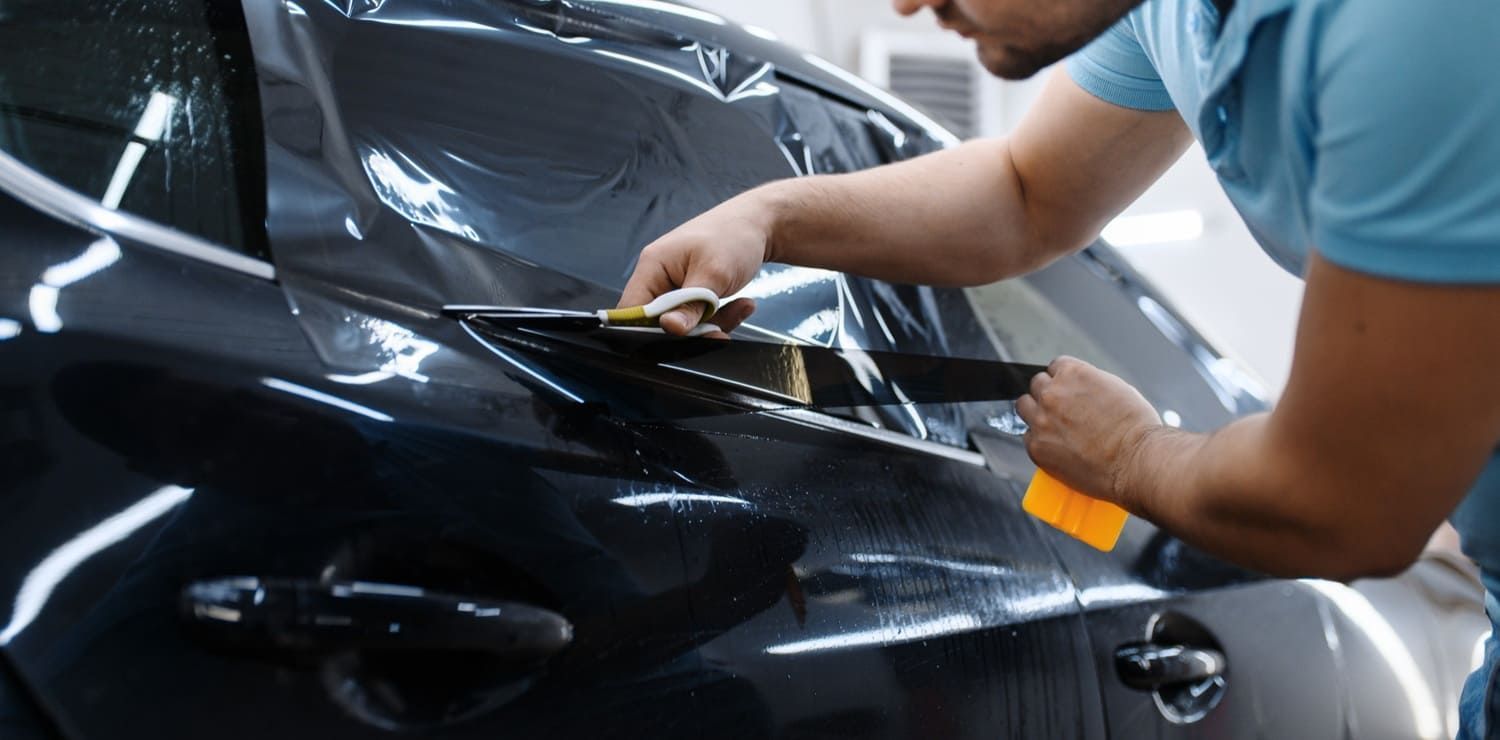How Soon Can I Roll Down Windows After Tinting?
Window tinting is a popular choice for car owners seeking privacy and protection. It enhances the vehicle's look while offering practical benefits. However, proper window tinting care is crucial to maintain its quality and longevity.
One common question is, "How soon can I roll down windows after tinting?" The answer is not straightforward. It depends on several factors, including the type of tint and environmental conditions.
Rolling down windows too soon can damage the tint, causing bubbles or peeling. This guide will help you understand the curing process and provide essential tips for window tinting care.
By following these guidelines, you can ensure your tint remains in top condition, enhancing both the aesthetic and functional aspects of your vehicle.

Why Waiting Matters: The Curing Process Explained
After window tinting, it's crucial to give the film time to cure. Curing allows the adhesive to bond completely with the glass. This bonding process ensures the tint adheres properly and performs effectively.
The curing time is essential as it prevents imperfections such as bubbling or peeling. When the tint cures well, it enhances durability and visual appeal. Rushing this process can lead to costly repairs or replacements.
A proper understanding of the curing process is vital for new tint installations. Here are key reasons why waiting matters:
- Adhesion: Time helps the tint bond securely to the glass.
- Appearance: Proper curing prevents bubbles and a hazy appearance.
- Longevity: A well-cured tint lasts longer and maintains quality.
Remember, patience during the curing period is an investment in your car's aesthetics and functionality. The benefits of waiting far outweigh the consequences of premature use, so it’s best to adhere to your tint professional's guidance.
How Long Should You Wait Before Rolling Down Windows?
The general guideline is to wait about 3 to 5 days before rolling down your windows after tinting. This waiting period ensures the tint film has adhered correctly to the glass surface. By following this rule, you help guarantee that the tint's integrity remains intact.
The exact drying time can vary due to different factors, such as climate and the type of tint. Warmer, sunnier weather tends to speed up the curing process. In contrast, colder or humid conditions may extend it. Different tint films also dry at slightly different rates, so it's best to follow your installer’s specific advice.
Here are a few key points to keep in mind:
- Standard Waiting Time: 3 to 5 days typically.
- Weather Influence: Heat speeds up curing; cold slows it down.
- Tint Type: Ask your installer for brand-specific guidance.
It's tempting to test the windows by rolling them down sooner, but patience is key. If you can, park the car in direct sunlight during the day. This can help accelerate the drying process while minimizing risks to the new tint. Always prioritize the recommended waiting period to avoid unnecessary damage and ensure a flawless finish.
Factors That Affect Window Tint Drying Time
Various factors influence how quickly window tint dries. These elements impact how smoothly the tint adheres to the glass and how effectively it cures. Understanding these can help you manage your expectations better after tint installation.
The climate is a primary factor affecting drying times. Warm, sunny environments promote faster curing. In contrast,
cooler temperatures and high humidity levels can significantly slow down the process.
The type of tint film also plays a crucial role. Some films are designed to dry quicker than others, so it's essential to know what you have. Always consult with your installer about the specific characteristics of your tint.
Here are a few elements to consider:
- Weather Conditions: Heat vs. cold and humidity.
- Tint Material: Different films, different drying rates.
- Location: Outdoor vs. indoor parking affects UV exposure.
Remember, while some of these factors are out of your control, understanding them can guide you in making informed care decisions. Keep these in mind for optimal outcomes.
What Happens If You Roll Down Windows Too Soon?
Rolling down your windows too early post-tint can cause significant issues. The main problem is the potential for the tint to peel away. Once it peels, the tint becomes unsightly and less effective.
Additionally, prematurely rolling down windows can create bubbles between the tint film and the glass. These bubbles not only mar the appearance but also degrade the tint's protective qualities.
These problems are not just cosmetic—they impact the tint's longevity and functionality. Here are common issues you might face:
- Peeling: Edges lift and separate.
- Bubbling: Air pockets form under the film.
- Reduced Life Span: Longevity of tint decreases significantly.
These issues stress the importance of patience. Following proper window tinting care guidelines can prevent these costly mistakes.
Essential Window Tinting Care Tips for New Installs
Newly installed window tint requires proper care to ensure it cures correctly and lasts for years. It's crucial to follow a few guidelines for optimal results.
First, make sure to let the tint dry fully. Avoid rolling down the windows for at least 3 to 5 days. This gives the adhesive ample time to bond securely.
Next, avoid cleaning the inside of the tinted windows during the curing period. Any cleaning can disrupt the bond and cause imperfections. Once the drying period is over, gently clean with non-ammonia-based cleaners.
Protecting the tinted windows from harsh weather conditions is also important. Park in a shaded, dry area to aid the curing process and prevent unnecessary stress on the tint.
Using simple, careful methods, you can maintain
window tint quality effectively. Here are some essential tips:
- Use a soft cloth: Prevent scratches while cleaning.
- Avoid harsh chemicals: Maintain the integrity of the tint.
- Inspect regularly: Watch for bubbles or peeling.
- Avoid using defrosters: Especially during the curing period.
- Limit contact: Keep pets and children from touching the glass.
Following these steps helps ensure that your new tint remains intact and effective for as long as possible. Proper care is essential for longevity and performance.

Cleaning and Maintaining Tinted Windows
Proper maintenance ensures that tinted windows remain in excellent condition and continue to provide the desired benefits. Start by using a soft, non-abrasive cloth for cleaning. Hard materials can scratch the tint, shortening its lifespan.
Always opt for cleaners free of ammonia. Ammonia-based products can degrade the tint over time, causing it to discolor or crack. Choose a gentle cleaner specifically designed for tinted surfaces instead.
Regular cleaning can prevent grime buildup, preserving the tint's clarity and effectiveness. A clean window not only looks better but also performs better in reducing glare and solar heat.
Inspect the tint regularly for signs of wear or damage, such as peeling or bubbling. Prompt attention can prevent minor issues from worsening. If you notice any serious problems, consult a professional to assess the tint and provide guidance on potential repairs.
Here are some key points to remember when
maintaining tinted windows:
- Use non-abrasive materials: Preserve the surface quality.
- Select gentle cleaners: Avoid those containing ammonia.
- Clean regularly: Reduce dirt accumulation.
- Inspect for damage: Address any issues quickly.
By following these care tips, you can extend the life and performance of your window tint, ensuring it continues to enhance the comfort and aesthetics of your vehicle.
Common Issues After Tinting and How to Handle Them
After tinting, some common issues might arise, but they are generally manageable with prompt attention. One problem you may encounter is bubbling, which often results from improper installation or rolling windows down too soon. If small bubbles appear, leave them for a few days; they might disappear as the tint cures.
Peeling, another common issue, usually indicates weak adhesive contact. This can be exacerbated by exposure to moisture during the curing process. If peeling occurs, especially along edges, consult a professional for assessment and repair options.
Hazy or blurred tint can occur in the initial days after installation. This haze often clears up as the film fully cures and should not be an immediate concern unless it persists.
Here’s how to handle these issues:
- Bubbles: Wait for curing; consult if they persist.
- Peeling: Seek professional help for resealing.
- Hazy tint: Allow time for curing; verify after.
By staying vigilant and addressing these issues promptly, you can maintain the quality and longevity of your window tint.
Frequently Asked Questions About Window Tinting Care
Window tinting often brings about several questions. Here, we address some common concerns to aid in proper window tinting care.How long after tinting before I can clean my windows?
It's usually best to wait two weeks before cleaning newly tinted windows. This ensures the film adheres firmly to the glass.
What cleaning products are safe for tinted windows?
Always use non-ammonia-based cleaners and a soft cloth. This prevents damage to the tint film.
Can I use a window defroster immediately after tinting?
Avoid using defrosters for at least a week to allow proper curing of the tint.
How long should I wait before rolling down my windows after tinting?
Typically, you should wait at least 3 to 5 days after window tint installation before rolling the windows down. This gives the tint adhesive enough time to fully cure and bond to the glass.
What happens if I roll down my windows too soon?
Rolling down your windows too early can cause the tint to peel, bubble, or shift, especially around the edges. This may result in costly repairs or the need to completely reapply the film.
Does weather affect how long tint needs to cure?
Yes, temperature and humidity play a role. In warmer, sunnier climates like Florida, tint may cure faster. In cooler or damp environments, it may take closer to the full 5 days—or even longer—for the adhesive to set properly.
Do different types of tint cure at different speeds?
Yes. Ceramic and high-performance films may require slightly more time to cure compared to standard dyed films. Always follow the installer’s specific aftercare instructions based on the film used.
Can I clean the windows during the curing period?
Avoid cleaning the inside of your windows during the curing period. Water and pressure from cleaning can damage or lift the uncured film. Wait until the tint has fully dried before cleaning with a soft cloth and ammonia-free cleaner.
Are there signs that the tint hasn't fully cured yet?
Yes. You may notice a slightly hazy or cloudy appearance or small water bubbles. These are normal and should disappear as the film cures. If the haze lasts beyond a week, check with your installer.
What if I accidentally rolled the window down too soon?
If you did so within the first 24–48 hours, contact your installer immediately. They may be able to repair or reapply the damaged area. At Tints & Beyond, we guide all clients with clear post-installation tips and offer solutions if any issues arise. Call us today at (239) 800-5233 if you need help or a quick inspection.
Conclusion: Protect Your Investment With Proper Window Tinting Care
Caring for your window tint ensures longevity and keeps it looking new. Following professional advice prevents common issues like peeling or bubbling.
Invest time in understanding the right maintenance practices. This investment will protect not only your tint but also your car's interior. Proper care enhances your vehicle's comfort and aesthetics.
At
Tints & Beyond , the best window tinting installers serving
Cape Coral, FL , we offer expert advice and quality installations.
Contact us today for your
free estimate!













